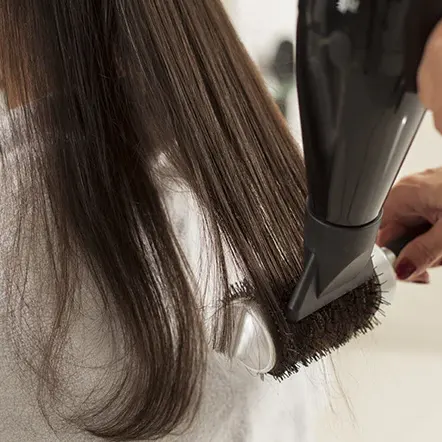Hair Straightening: Achieve Sleek, Smooth, and Frizz-Free Hair
Hair straightening methods in a hair salon typically include chemical treatments, such as relaxing and Japanese straightening, and heat-based treatments, such as flat ironing and blowouts. Chemical treatments use chemicals to break down the hair’s natural structure, while heat-based treatments use high temperatures to temporarily straighten the hair. The best method for you will depend on your hair type and desired results, so it’s important to consult with a professional stylist before choosing a treatment.
Are you tired of dealing with unruly, frizzy hair that refuses to cooperate? Hair straightening is a popular solution that can transform your locks into sleek, smooth, and manageable tresses. Whether you have naturally curly, wavy, or frizzy hair, various methods of hair straightening can help you achieve the straight and polished look you desire. Let’s explore some of the most common hair straightening methods available in professional salons:
Chemical Relaxers
Chemical relaxers are a popular choice for individuals with tightly curled or highly textured hair who seek long-lasting straightening results. This method involves the application of a chemical relaxer product that breaks down the hair’s natural structure. The relaxer is left on the hair for a specific duration, allowing it to loosen the curl pattern and transform it into a straighter form. This process provides permanent straightening results until new hair growth occurs.
Keratin Treatments
Keratin treatments, often referred to as Brazilian blowouts, are an excellent option for those seeking temporary straightening with added benefits. These treatments use a specially formulated keratin-infused product that is applied to the hair. Heat is then used to seal the product, resulting in smoother, frizz-free hair. Keratin treatments provide several months of manageable, straight hair while also improving overall hair health, adding shine, and reducing frizz.
Japanese Hair Straightening
Japanese hair straightening, also known as thermal reconditioning, is a permanent straightening method suitable for individuals with strong, resistant hair. This technique uses a combination of chemicals and heat to alter the hair’s internal structure, breaking and reforming the hair bonds to create long-lasting straightness. The process can be time-consuming, but the results are dramatic, transforming curly or wavy hair into sleek, pin-straight locks.
Hair Rebonding
Similar to Japanese straightening, hair rebonding is a permanent straightening technique that alters the hair’s structure. It is particularly effective for individuals with curly or wavy hair who desire permanently straight hair. During the process, the hair is treated with a relaxing solution to break down its natural structure. After that, the hair is neutralized and conditioned, resulting in straightened strands that are easy to manage.
Flat Ironing
Flat ironing is a popular temporary straightening method that uses a flat iron with heated plates to straighten the hair. It is a versatile technique that allows you to achieve straight hair quickly and easily. However, it is important to apply a heat protectant product before using a flat iron to minimize damage to the hair. Flat ironing is an excellent option for individuals who prefer occasional straightening without permanent changes to the hair’s structure.
Remember, it is essential to consult with a professional stylist who specializes in hair straightening before choosing a method. A stylist can assess your hair type, condition, and desired results to recommend the most suitable technique for you. They will also provide guidance on proper maintenance and post-treatment care to ensure long-lasting and healthy results.
Say goodbye to frizz, unruly curls, and endless styling struggles. With various hair straightening methods available in professional salons, you can achieve the sleek, smooth, and hassle-free hair you’ve always dreamed of. Consult a skilled stylist today, and get ready to embrace the joy of beautifully straightened locks.


